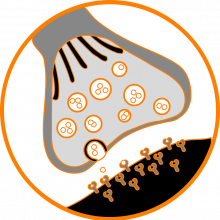Synapses sit between nerves, to send the message across. We couldn't function without them, but how do they work? Mark Dallas provided this answer...
In this episode

Naked Body: Sparking synapses
Mark Dallas, University of Reading
Synapses sit between nerves, to send the message across. We couldn't function without them, but how do they work? Mark Dallas provided this answer...
In order for us to function our nerve cells need to be able to talk to each other.
This exchange of information within our central nervous system between nerve cells occurs through structures called synapses.
Most of these structures allow for exchange of chemical signals but there are other synapses that allow for the passage of electrical signals.
Synapses are where the tail-end of one neuron meets either another neuron, or sometimes a different kind of cell. They’re like junctions for the messages your body needs to send.
First there are the the electrical synapses. These are sites where channels are formed between nerve cells that are in extreme proximity to each other (approximately 2 billionths of a metre). These channels allow for flow of electric current directly between nerve cells, just like down a wire, sending the message between the nerve cells to tell your body what to do.
Chemical synapses work quite differently, they contain different components which contribute to the highly specialized nature of these biological communication hubs.
Imagine two nerve cells connected together at a synapse. The first cell wants to send a message to the second cell. At the end of the first cell is a bulge in the nerve cell, which contains mini packages of chemicals called neurotransmitters.
Neurotransmitters are different chemicals which help tell your body what to do.
These packages that contain the neurotransmitters are called vesicles and it is estimated that each terminal has some 500 vesicles.
Scale this up and a typical nerve cell has approximately 1 million vesicles!
Upon receiving an electrical signal, these packages will be released into the space between the two nerve cells. This space is called the synaptic cleft and is normally 20 billionths of a metre wide, which is thousands of times smaller than the width of a hair.
The size is important as it will control their concentrations. There is only so much space for the chemical transmitter inside for these packages to fill, and it can diffuse from one cell to the next very rapidly.
Then the second nerve cell receives the signal and processes it. The part of it which receives the signal is called the postsynaptic terminal.
In order to process the signal, the postsynaptic terminal has receptors that can identify which neurotransmitter is sent (from the sender) and then elicit a response.
This response is a change in the excitability of the receiver cell. If the receiver is sufficiently excited, it triggers its own electrical response which allows the signal to continue to the next nerve cell in the network of cells. Sometimes, the second cell will only respond if lots of synapses are active at once, which is essentially how decisions are made.
And that is a pretty important thing to do!










Comments
Add a comment